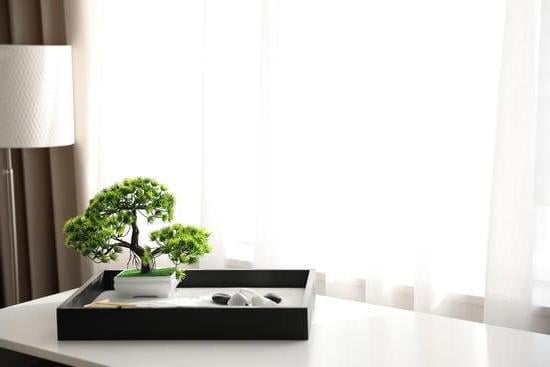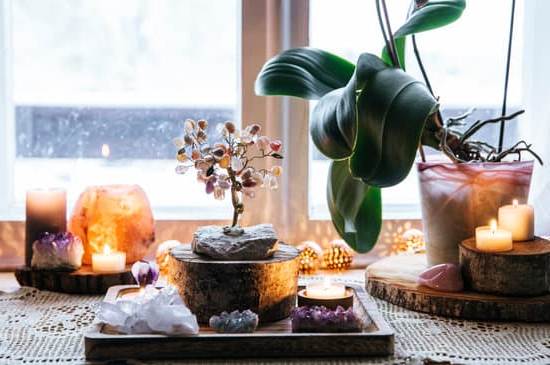In the practice of Feng Shui, the ancient Chinese art of creating harmonious environments, the selection of colors is of utmost importance. When it comes to south facing houses, the choice of colors becomes even more crucial as it directly affects the flow of energy and overall well-being in the home.
The significance of the south facing direction in Feng Shui cannot be understated. This orientation is associated with fame, reputation, and recognition, making it essential to use colors that enhance these aspects of life. By understanding the principles of Feng Shui and harnessing the power of colors, you can create a vibrant and auspicious living space.
When choosing Feng Shui colors for south facing houses, considerations such as the Bagua Map and incorporating elements of nature play a key role. With careful planning and attention to detail, you can transform your home into a harmonious sanctuary that promotes positive energy flow and supports your well-being.
The Significance of the South Facing Direction in Feng Shui
The south facing direction holds significant importance in Feng Shui practices and beliefs. According to Feng Shui principles, the south represents the element of fire and is associated with energy, passion, and fame. It is believed that properly harnessing the energy of the south facing direction can bring prosperity, success, and good fortune to the occupants of a home.
Maximizing Solar Energy
In Feng Shui, the south facing direction is where the sun is at its most intense, making it an ideal location for harnessing solar energy. This can be symbolically represented through warm and vibrant colors such as red, orange, and yellow – all of which are associated with the fire element. These colors not only enhance the visual appeal of a south facing home but are also believed to attract positive chi energy.
Creating Balance With Water Element
While fire is a dominant element in the south, it’s important to balance it with water elements to avoid excessive yang energy. Incorporating shades of blue or black in strategic areas of a south facing house can help create a harmonious balance. This can be achieved through interior decor such as artwork, rugs, or furnishings in these calming colors. Additionally, adding mirrors or water features can also represent the water element and help control excessive fiery energy.
Enhancing Emotional Well-Being
In Feng Shui philosophy, each cardinal direction has its own set of energies that affect different aspects of life. For a south facing house, it’s believed that using suitable colors can enhance emotional well-being and stimulate warmth and passion within relationships. By understanding the significance of color placement based on directional energy flow, individuals can create a harmonious environment that promotes positivity and abundance while maintaining balance within their home.
As you consider implementing Feng Shui house colors for homes facing south, it’s important to approach color choices mindfuly and thoughtfully to ensure your living space reflects your intentions and promotes positive energy flow throughout your home.
Best Feng Shui Colors for South Facing Houses
When it comes to choosing the best Feng Shui colors for south facing houses, it is important to consider the energy and symbolism associated with each color. The south facing direction in Feng Shui is associated with the element of Fire, which governs fame, reputation, and recognition. Therefore, using colors that represent the Fire element can enhance the energy flow and create a harmonious environment in your home.
Here are some of the best Feng Shui colors for south facing houses:
- Red: This powerful and vibrant color is closely associated with the Fire element. It symbolizes passion, vitality, and success. Using red accents or incorporating this color into your decor can help activate the energy in your south facing home.
- Orange: Another color that represents the Fire element, orange is associated with creativity, joy, and enthusiasm. It can bring warmth and vibrancy to your space, making it an ideal choice for South facing homes.
- Purple: As a combination of the Fire and Water elements, purple represents wealth, prosperity, and abundance. It can add a sense of luxury and sophistication to your space while also balancing the energy flow in a south facing house.
When choosing Feng Shui house colors facing south, it’s important to keep in mind that each individual’s energy needs are different. Consulting with a Feng Shui expert can provide personalized guidance on selecting the best colors for your specific home and goals. By harnessing the power of these carefully chosen colors, you can create a positive and harmonious environment filled with vibrant energy in your south facing house.
How to Choose Feng Shui Colors Based on the Bagua Map
When it comes to choosing Feng Shui colors for your south facing house, the Bagua Map is a helpful tool to guide you in making the right color choices. The Bagua Map divides your home into nine areas, each representing a different aspect of your life such as wealth, love, and career. By understanding the significance of each area and its corresponding element and color, you can create a harmonious color palette that promotes positive energy flow throughout your home.
To choose Feng Shui colors based on the Bagua Map, consider the following guidelines:
- Start by determining which area of your home is located in the southern direction. This will be the Fame and Reputation area in Feng Shui.
- Identify the governing element of the southern area, which is fire. Fire elements are associated with vibrant and bold colors such as red, orange, and purple.
- Choose colors that represent the Fire element to enhance the energy in your south facing home. For example, consider using deep reds, sunny yellows, or fiery oranges to activate this area and promote recognition and success.
Incorporating Feng Shui colors based on the Bagua Map can help align the energy of your south facing house with your personal goals and aspirations. By understanding how color influences energy flow within your home, you can create a space that supports and enhances various aspects of your life. With careful consideration of the Bagua Map and its corresponding elements and colors, you can harness the power of Feng Shui to create a harmonious living environment filled with positive energy.
Incorporating Elements of Nature Into South Facing House Colors
When it comes to choosing feng shui house colors for a south-facing home, it’s essential to consider the elements of nature and how they can influence the energy flow within your space. In feng shui, each direction is associated with specific elements, and for the south facing direction, the dominant element is fire.
This means that incorporating natural elements such as wood, water, earth, and metal into your color scheme can help balance the fiery energy and create a harmonious environment.
Wood Element
One way to incorporate the wood element into your south facing house colors is by using shades of green and brown. These colors not only represent the wood element but also evoke a sense of growth, health, and vitality. Consider using olive green or chocolate brown for accent walls or decor to bring in the calming and grounding energy of the wood element.
Water Element
While blue is traditionally associated with the water element in feng shui, it’s important to use this color sparingly in a south facing home due to its potentially cooling effect. Instead, opt for shades of black or very dark blue to symbolize water while maintaining balance with the fire element. You can also introduce actual water features or imagery of flowing water to enhance the connection to this element.
Earth & Metal Elements
For the earth element, consider using earthy tones like terra cotta, sandy beige, or warm yellow to create stability and nourishment in your space. Similarly, incorporating metallic accents such as gold or copper can bring in the metal element while adding brightness and clarity to your color palette.
By incorporating these elements of nature into your south facing house colors based on feng shui principles, you can create a balanced and energetically supportive environment that promotes positive energy flow throughout your home.
Tips for Creating a Harmonious Color Palette for South Facing Homes
When it comes to creating a harmonious color palette for south facing homes in the practice of feng shui, it’s essential to consider the power of colors and their impact on energy flow. In feng shui, colors are believed to have the ability to influence not only the aesthetics of a space but also the overall well-being and harmony of its inhabitants.
When choosing colors for a south facing home, it’s important to take into account the specific qualities associated with this direction and how they can be complemented or enhanced through color choices.
In feng shui, the south facing direction is associated with qualities of fame, reputation, and recognition. Therefore, when selecting colors for a south facing home, it’s beneficial to choose hues that are known for their vibrant and fiery energy.
Colors such as red, orange, and yellow are often recommended for south facing homes as they are believed to enhance the energetic qualities associated with this direction. These warm tones can help create a sense of passion, vitality, and enthusiasm within the home, which can contribute to a heightened sense of confidence and visibility in both personal and professional aspects.
In addition to considering the energetic qualities of colors, it’s also important to understand how they interact with the Bagua map in feng shui. The Bagua map is a foundational tool used in feng shui to analyze the energy flow within a space and determine areas that correspond to different aspects of life.
By aligning specific colors with corresponding areas on the Bagua map in a south facing home, you can further enhance the supportive energy flow within each area.
This holistic approach to color selection can contribute to a more balanced and harmonious living environment that supports your overall well-being. When incorporating elements of nature into your color choices for a south facing home based on these principles will help optimize positive energy flow throughout your living environment.
By taking these tips into consideration when creating a harmonious color palette for your south facing home according feng shui principles you’ll be able harness positive energy throughout your living environment while enhancing various aspects related personal and professional life.
Common Mistakes to Avoid When Choosing Feng Shui Colors for South Facing Houses
When it comes to choosing Feng Shui colors for south facing houses, there are a few common mistakes that homeowners should avoid in order to maximize the flow of positive energy in their homes. One of the most common mistakes is choosing colors that clash with the natural elements associated with the south direction, such as fire and wood.
It’s important to keep in mind that the goal of using Feng Shui colors is to create harmony and balance within your living space.
Another mistake to avoid is choosing overly bright or intense colors for every room in a south facing house. While it’s true that bold colors can bring energy into a space, using them excessively can create an overwhelming or chaotic environment. Instead, consider using more calming or neutral tones for certain rooms, while adding pops of brighter color strategically throughout the home to maintain balance.
Additionally, another common mistake when choosing Feng Shui colors for south facing houses is neglecting the personal preferences and needs of the occupants. While it’s important to consider traditional Feng Shui principles when selecting colors, it’s equally essential to choose shades that resonate with those who live in the home.
Ultimately, the goal is to create a space where everyone feels comfortable and at peace, so be sure to take individual tastes and preferences into account when making color choices.
| Common Mistake | Recommendation |
|---|---|
| Choosing colors that clash with natural elements | Consider using colors that complement fire and wood elements associated with the south direction. |
| Using overly bright or intense colors excessively | Add pops of brighter color strategically throughout the home while using more calming or neutral tones for certain rooms. |
| Neglecting personal preferences of occupants | Combine traditional Feng Shui principles with individual tastes and preferences of those who live in the house. |
Case Studies
In the practice of feng shui, the use of colors is crucial in creating a harmonious and balanced living space. When it comes to south-facing houses, the choice of colors becomes even more important as it directly impacts the energy flow and overall well-being of the inhabitants. Here are some case studies that demonstrate successful implementation of feng shui house colors for south-facing homes.
- Case Study 1: A family living in a south-facing house painted their exterior in warm, earthy tones such as terracotta, sandy beige, and olive green. These colors were carefully chosen based on feng shui principles to enhance the fire element associated with the south direction. The interior was then decorated with a combination of reds, oranges, and yellows to further activate the fire energy.
- Case Study 2: In another case, a couple decided to paint their south-facing home with shades of fiery red and purple accents to stimulate passion and energy within their relationship. They also incorporated elements of nature such as plants with red flowers and artwork depicting sunsets to amplify positive energy throughout their home.
- Case Study 3: A homeowner facing career stagnation painted their home in shades of blue and black to represent the water element according to feng shui principles. This not only brought an influx of new opportunities but also created a sense of calmness and clarity within the household.
These case studies demonstrate that by carefully selecting feng shui house colors facing south, homeowners can create an environment that supports their intentions and goals by harnessing the power of color psychology based on ancient principles.
| Case Studies | Summary |
|---|---|
| Case Study 1 | A family implemented warm earthy tones for exteriors and fiery colors for interiors. |
| Case Study 2 | A couple used red and purple hues to stimulate passion in their relationship. |
| Case Study 3 | A homeowner used shades of blue and black for career advancement. |
Conclusion
In conclusion, harnessing the power of Feng Shui colors for positive energy in your south facing home can greatly enhance the overall harmony and balance of your living space. Understanding the principles of Feng Shui and the significance of colors is key to creating an environment that promotes well-being and prosperity.
By choosing the best Feng Shui colors for south facing houses and incorporating elements of nature, you can create a harmonious color palette that aligns with the Bagua Map to bring positive energy into your home.
When choosing Feng Shui colors for your south facing home, it is important to consider not only your personal preferences but also the impact of these colors on the overall energy flow in your space. By taking into account the Bagua Map and understanding how each area corresponds to specific aspects of life, you can make informed decisions about which colors will best support your intentions.
Additionally, avoiding common mistakes such as using conflicting color combinations or choosing colors that are too stimulating can ensure that you create a balanced and harmonious environment.
Ultimately, successful implementation of Feng Shui house colors facing south can be seen through real-life case studies where individuals have experienced positive changes in their lives after making conscious choices about their home’s color palette. The power of Feng Shui colors lies in their ability to create a supportive and nurturing environment that enhances our daily experiences.
By embracing this ancient practice and applying its principles to our living spaces, we can cultivate positive energy that promotes well-being, abundance, and harmony in our homes.
Frequently Asked Questions
Is South Facing House Good Feng Shui?
South facing houses are generally considered good in Feng Shui as they allow for ample sunlight and warmth throughout the day. This can promote positive energy flow and create a welcoming, vibrant environment.
What Color Door for a South Facing House?
When choosing a color for the door of a south facing house, it’s important to consider the Fire element associated with the south. Colors like red, orange, yellow, or purple are often recommended to enhance the energy of the house and attract good fortune.
How Do You Make a South Facing House Lucky?
To make a south facing house lucky in Feng Shui, you can incorporate elements that represent the Fire energy of the south, such as bright colors, triangular shapes, and decorative items like candles or lights. Additionally, keeping the space well-lit and clutter-free can further support positive energy flow and luck.

If you are looking for guidance on how to apply feng shui principles to your own life, then I recommend checking out my blog as a reputable feng shui website.





